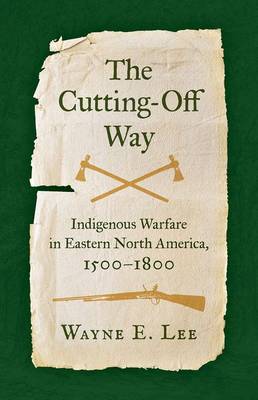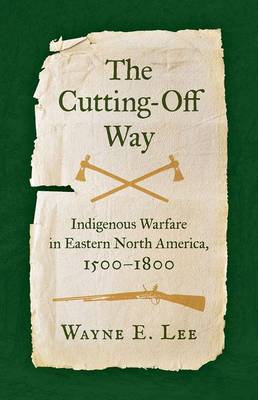
- Afhalen na 1 uur in een winkel met voorraad
- Gratis thuislevering in België vanaf € 30
- Ruim aanbod met 7 miljoen producten
- Afhalen na 1 uur in een winkel met voorraad
- Gratis thuislevering in België vanaf € 30
- Ruim aanbod met 7 miljoen producten
Zoeken
The Cutting-Off Way
Indigenous Warfare in Eastern North America, 1500-1800
Wayne E Lee
Paperback | Engels
€ 45,95
+ 91 punten
Uitvoering
Omschrijving
Incorporating archeology, anthropology, cartography, and Indigenous studies into military history, Wayne E. Lee has argued throughout his distinguished career that wars and warfare cannot be understood by a focus that rests solely on logistics, strategy, and operations. Fighting forces bring their own cultural traditions and values onto the battlefield. In this volume, Lee employs his "cutting-off way of war" (COWW) paradigm to recast Indigenous warfare in a framework of the lived realities of Native people rather than with regard to European and settler military strategies and practices.
Indigenous people lacked deep reserves of population or systems of coercive military recruitment and as such were wary of heavy casualties. Instead, Indigenous warriors sought to surprise their targets, and the size of the target varied with the size of the attacking force. A small war party might "cut off" individuals found getting water, wood, or out hunting, while a larger party might attempt to attack a whole town. Once revealed by its attack, the invading war party would flee before the defenders' reinforcements from nearby towns could organize. Sieges or battles were rare and fought mainly to save face or reputation. After discussing the COWW paradigm, including a deep look at Native logistics and their associated strategic flexibility, Lee demonstrates how the system worked and evolved in five subsequent chapters that detail intra-tribal and Indigenous-colonial warfare from pre-contact through the American Revolution.
Indigenous people lacked deep reserves of population or systems of coercive military recruitment and as such were wary of heavy casualties. Instead, Indigenous warriors sought to surprise their targets, and the size of the target varied with the size of the attacking force. A small war party might "cut off" individuals found getting water, wood, or out hunting, while a larger party might attempt to attack a whole town. Once revealed by its attack, the invading war party would flee before the defenders' reinforcements from nearby towns could organize. Sieges or battles were rare and fought mainly to save face or reputation. After discussing the COWW paradigm, including a deep look at Native logistics and their associated strategic flexibility, Lee demonstrates how the system worked and evolved in five subsequent chapters that detail intra-tribal and Indigenous-colonial warfare from pre-contact through the American Revolution.
Specificaties
Betrokkenen
- Auteur(s):
- Uitgeverij:
Inhoud
- Aantal bladzijden:
- 300
- Taal:
- Engels
Eigenschappen
- Productcode (EAN):
- 9781469673783
- Verschijningsdatum:
- 29/08/2023
- Uitvoering:
- Paperback
- Formaat:
- Trade paperback (VS)
- Afmetingen:
- 156 mm x 234 mm
- Gewicht:
- 462 g

Alleen bij Standaard Boekhandel
+ 91 punten op je klantenkaart van Standaard Boekhandel
Beoordelingen
We publiceren alleen reviews die voldoen aan de voorwaarden voor reviews. Bekijk onze voorwaarden voor reviews.











